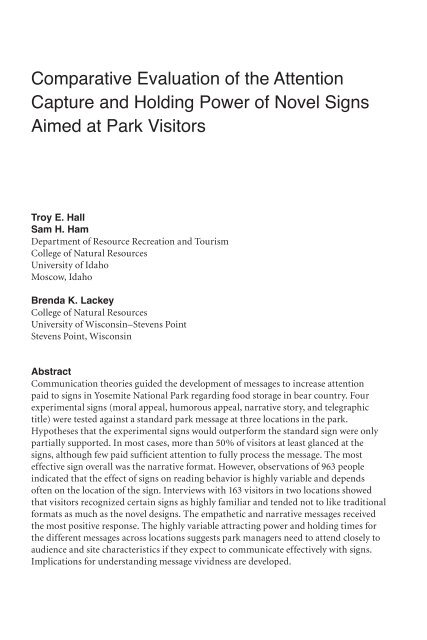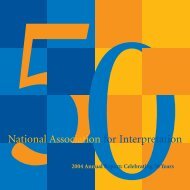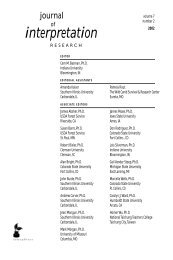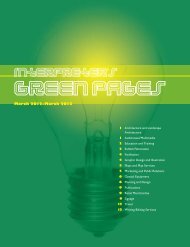interpretation
Volume 15, Number 1 - National Association for Interpretation
Volume 15, Number 1 - National Association for Interpretation
Create successful ePaper yourself
Turn your PDF publications into a flip-book with our unique Google optimized e-Paper software.
Comparative Evaluation of the Attention<br />
Capture and Holding Power of Novel Signs<br />
Aimed at Park Visitors<br />
Troy E. Hall<br />
Sam H. Ham<br />
Department of Resource Recreation and Tourism<br />
College of Natural Resources<br />
University of Idaho<br />
Moscow, Idaho<br />
Brenda K. Lackey<br />
College of Natural Resources<br />
University of Wisconsin–Stevens Point<br />
Stevens Point, Wisconsin<br />
Abstract<br />
Communication theories guided the development of messages to increase attention<br />
paid to signs in Yosemite National Park regarding food storage in bear country. Four<br />
experimental signs (moral appeal, humorous appeal, narrative story, and telegraphic<br />
title) were tested against a standard park message at three locations in the park.<br />
Hypotheses that the experimental signs would outperform the standard sign were only<br />
partially supported. In most cases, more than 50% of visitors at least glanced at the<br />
signs, although few paid sufficient attention to fully process the message. The most<br />
effective sign overall was the narrative format. However, observations of 963 people<br />
indicated that the effect of signs on reading behavior is highly variable and depends<br />
often on the location of the sign. Interviews with 163 visitors in two locations showed<br />
that visitors recognized certain signs as highly familiar and tended not to like traditional<br />
formats as much as the novel designs. The empathetic and narrative messages received<br />
the most positive response. The highly variable attracting power and holding times for<br />
the different messages across locations suggests park managers need to attend closely to<br />
audience and site characteristics if they expect to communicate effectively with signs.<br />
Implications for understanding message vividness are developed.












